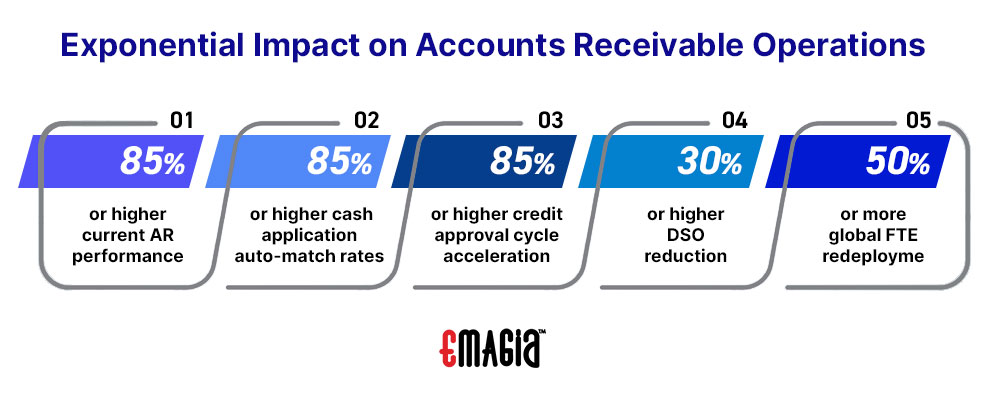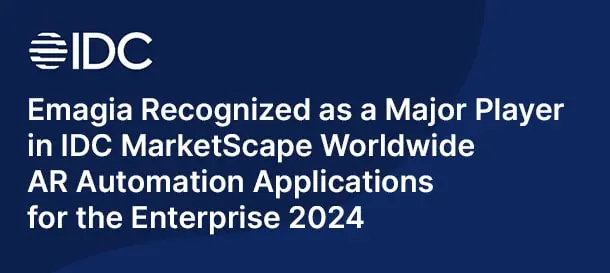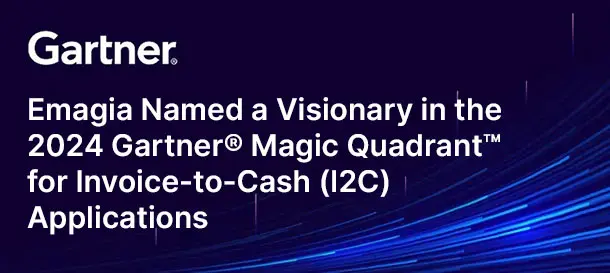Companies have long sought to automate financial operations. Yet, for years business process automation failed to live up to its promise. The vision was true, but the complexity and fragmentation remained a hindrance, particularly in accounts receivable operations.
It has taken a combination of advanced technologies to transcend the obstacles. In 2019, Gartner coined a new term—hyper-automation—to describe what was emerging to deliver on technology’s promise.
Hyper-automation can deliver operational excellence and organizational resilience for accounts receivable. The pandemic demonstrated the importance of resilience. If the pandemic is waning, there are many other disruptive forces facing businesses.
Three Key Technologies for Accounts Receivable Transformation
Hyper-automation is the application of advanced technologies like robotic process automation (RPA), artificial intelligence (AI), and machine learning (ML) and process mining to automate processes in ways significantly more impactful than rudimentary automation capabilities. RPA mimics human action to handle formerly manual, repetitive tasks. It follows a sequence of steps to produce a desired outcome without human intervention. Applied to the order-to-cash process (O2C), RPA “bots” gather unstructured data from portals and websites or enter received data and post it in ERPs.
AI refers to the simulation of human intelligence in machines programmed to “think” and mimic human actions. The term may also apply to any machine that exhibits such human traits as the ability to sense, reason, converse, read, learn, and solve problems. AI includes natural language processing (NLP), deep learning (DL) and computer vision. For O2C, AI supports cognitive data capture and intelligent, conversational digital assistants.
ML is a branch of AI. It analyzes data and automates analytical model building. Systems learn from user and data encounters, identify patterns, and arrive at decisions with minimal human intervention. Uses in O2C include predictive analytics, identifying customer payment behavior, the customer’s propensity to default or dispute, assigning probable reason codes, and cash application matching.
Business process automation, also known as digital transformation, streamlines sophisticated business functions. The primary objective is to bring integration and simplicity to operational workflows to increase quality and minimize costs. Applications include collections strategy, dispute resolution workflow, and cash application matching rules.
Automated processes combined with advanced analytics and an educated workforce lead to several benefits:
- Greater productivity
- Instant and accurate insights
- Increase employee satisfaction
- Greater compliance and reduced risk
- Increased collaboration
- Increased workforce capacity
Gartner, IDC, Aberdeen Group and Forrester have recognized Emagia as a leader in digital order-to-cash (O2C). Hyper-automation describes Emagia’s O2C system and processes. Through its integration of the key technologies, Emagia surmounts the fragmentation and complexity in AR operations.

Exponential Impact on Accounts Receivable Operations
Applied to accounts receivable operations across the O2C cycle, hyper-automation like Emagia’s is producing world-class performance. Operationally, companies can achieve:
- 85% or higher current AR performance
- 85% or higher cash application auto-match rates
- 85% or higher credit approval cycle acceleration
- 30% or higher DSO reduction
- 50% or more global FTE redeployment
The combined power of intelligent technologies is producing the kind of automation envisioned:
- Automatic credit checks on all orders, with “touchless” release of up to 85 percent
- Credit bureau integration
- Automatic credit scoring and decisions on 100 percent of orders, with touchless approvals of 85+ percent
- 100 percent touchless invoicing and posting to vendor portals
- Automated collections with 100 percent digital assistant-initiated request-to-pay
- 85+ percent touchless payments
- 85 percent touchless deductions gathering & automated processing
- 85 percent auto-match, with 85 percent touchless remittance data capture (with bank integrations)
- Customer portal with digital assistant enabling 100 percent self-service and digital payments
Three A’s and the Inevitability of Hyper-automation
Automation, analytics and AI are Emagia’s “three A’s” of hyper-automation, providing hyper-efficient, intelligent automated processing and unifying the disparate data sources across systems and geographies. Machines will handle the administrative activities allowing the human workforce to move to knowledge work. People can address exceptions and escalations and shift focus to strategic outcomes.
Gartner observes that extensive and expensive business processes are among factors that, like a sea anchor, are a drag on organizations. These processes have been supported by patchwork technologies that are neither optimized, lean, connected or consistent. Digital acceleration, pushed by the pandemic, is now crucial. Hyperautomation, which can interface with myriad data sources and systems, is the key to overcoming the inadequate patchwork solutions of the past.
“Hyper-automation is irreversible and inevitable,” says Gartner Research Vice President Brian Burke. “Everything that can and should be automated will be automated.”
To learn more on hyper-automation of AR operations, contact Emagia.




